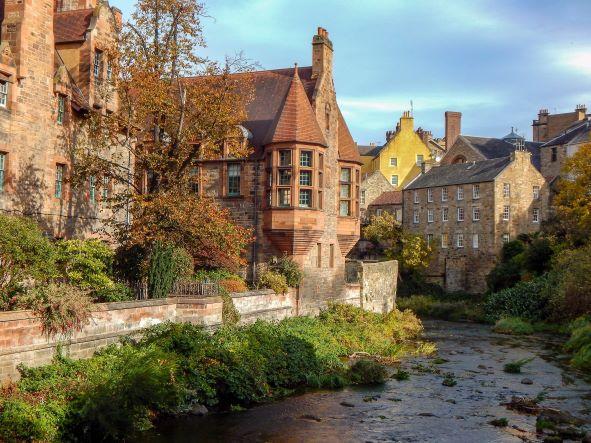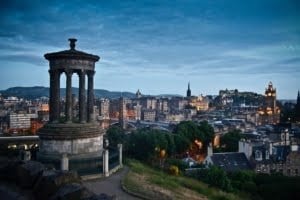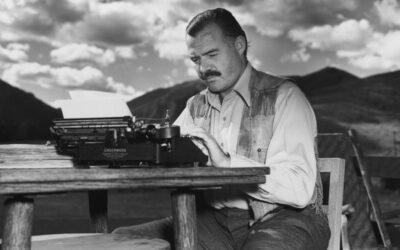With about a million residents in the city and the surrounding area, Edinburgh is one of Scotland’s most fun cities. Located in the Central Belt region of the country, it is also the capital and blends a seamless style of the modern new world and classical old charm that gives a truly unique feeling. Archaeological evidence suggests that the area around Edinburgh has been inhabited for quite a long time with early settlements dating back to even before the Bronze Age. In the 600s the first few forts and fortifications were built and when the English invaded in the 7th century they named the area “Eiden’s Burgh”, in which “burgh” translate’s to “fortress”. The Scots built a castle, renamed the land, then by the 12th century the small community that lived there grew and thrived into a larger settlement. Due to war, famine, and a spread of plague, the city was in ruins with a destroyed economy, overcrowding, and general unsanitary living conditions and so the act of Union in 1707, brought England and Scotland together to mutually help themselves both get out of the dire situation. The town expanded in the 18th century, fixing the population problem and the industrial revolution brought many residents out of poverty.
For a European capital city, Edinburgh has a small village feel. There’s a sense of community here that feels like you can stroll down the street and run into someone you might know. While at times familiar, there’s also a sense of wonder and feeling like you’ll discover something new around the corner. It’s a big, exciting city, with small-town vibes and plenty of eccentricities to discover. Here are some of the best things to do in Edinburgh.
Arthur’s Seat
It might be at the top of a lot of tour guides but sometimes there’s a good reason why things like this are always mentioned. Arthur’s Seat provides some of the best views in Edinburgh. It’s almost 900-feet above sea level so it’s not a particularly challenging hike and it also won’t take you all day. You’ll get to admire some pretty stellar views of the city including the 600-year old Saint Anthony’s Chapel and the 2,000-year-old fort at Dunsapie Loch. The trail starts at the foothills in the beautiful Holyrood Park and the rugged hills and wild rocky trails will make it a little hard to believe that you’re only two miles away from the city center. Wear some comfy shoes and bring a camera.
Take in the City by Foot
There’s no doubt that Edinburgh is a walking city. Wear your step counter and some good shoes because the best way to see the city is to walk through its winding and sometimes little streets.
The Royal Mile: Even if you tried to avoid strolling through the iconic Royal Mile, you’d probably still do it inadvertently. The Royal Mile is a stretch of street that divides the Old Town with New Town (ironically, New Town was built in the 1700s). It is called the Royal Mile because it links the two royal buildings of Scotland’s capital; the Edinburgh Castle at the top of the hill, and Holyrood at the bottom. Every August, the street becomes the beating heart of the legendary Edinburgh Fringe Festival. The place is beaming with tourists, shows, street performances, and the energy is electric. Cobblestone streets, tiny little shops, and 600-year-old buildings make the place special in that eccentric Edinburgh way.
At the end of the Royal Mile is the World’s End. In an alleyway that used to be a fish market, the World’s End alleyway has been around since the 15th century. The area at this end of the city was mostly marked by low-income residents and poverty and the alleyway unofficially marked the end of the city limits. A gate was positioned on the opposite end of the close and traveler’s going in or out had to pay a fee, if you couldn’t afford it, you were confined to being inside or outside the city.
Also along the Royal Mile, is the oasis of Dunbar’s Close. Given the history of the area, the space has tons of gorgeous little alleyways and old buildings. While the World’s End might be a stark reminder of the city’s more brutal past, Dunbar’s Close is an oasis in plain sight. Originally part of a 17th-century garden, the space has been lovingly restored in the 70s to its former glory. As the old town was being revitalized, new stonework and hedges were planted and now the walled garden allows guests to meander amongst the flowers and shrubs in the heart of the city. The space feels like a miniature park, especially when the flower beds bloom overhead, giving the space a very vibrant and colorful pop.
The Water of Leith Walkway: If you want to admire the beauty and not be in the middle of all the hustle and bustle the Water of Leith Walkway is the spot. The stretch of path is pretty long clocking in at about 12 miles going from the Balerno suburbs all the way into the city proper. As opposed to the Royal Mile, the walk here is filled with leafy green trees, blooming wildflowers, and a gorgeous little canal that, if you prefer, you can canoe or paddleboat through. Biking is also an option and you’ll end up passing by plenty of Edinburgh landmarks such as the Royal Botanical Gardens, Scottish National Gallery of Art, and the Dean Bridge.
The Royal Botanical Gardens are the second-oldest in Britain (after Oxford University’s) and were established in 1607 for the purpose of growing medicinal plants. Now the space is more of a public leisure garden with different temperate zones for climate and a Chinese-style garden on the hillside with pagodas, a lily pond, and waterfalls. Come for the plants, stay for the views of Victorian-era greenhouse architecture.
Visit the National Museum of Scotland
Located almost quite literally in the middle of Edinburgh, the National Museum of Scotland is your one-stop for learning about everything Scotland. The building is pretty massive and its modern look smack in the middle of the old city is a stark contrast to the surrounding architecture of the city. A lot of the exhibits are on a rotational basis so there’s plenty of reason to come back and visit again, but where the museum really shines is its permanent exhibit on everything Scottish. Some highlights of the museum include the Lewis Chessmen which are ornately carved from walrus tusk dating back to the 12th century. Miniature pinewood coffins were found at Arthur’s Seat in 1836, which since their discovery have been associated with witchcraft. And one of Scotland’s most famed dead residents can be found here as well; Dolly the Sheep. Born in 1996 at the University of Edinburgh, Dolly was the first successfully cloned mammal. Now her taxidermied remains are on display at the museum for all to see. Finally, if you’re looking to get some fresh air after a long day seeing everything here, hop on the lift to the seventh floor and chill out at the rooftop terrace. The panoramic view from the top offers a great view of Edinburgh and was designed by designer and sculptor Andy Goldsworthy and features sandstone blocks and gardens meant to represent the plant life found throughout Scotland.

Edinburgh Castle is magnificent but can be overrun by tourists. Check out the other castles nearby as well.
Explore Edinburgh’s Castles
With a city as old as Edinburgh and as important in the history of Scotland, the city has a few interesting castles and manors that dive into the history of the city and are well-kept and preserved pieces of antiquity.
Edinburgh Castle: Arguably the most important and most visited of all the castles in the area, Edinburgh Castle looms over the city and is home to some of Scotland’s most important cultural artifacts. Upon approaching the gates, don’t head in too quickly and take a second to pause at the statues of Sir Willam Wallace and Robert the Bruce. While the statues are modern implements, the two figures are two very important people in Scottish history. The displays inside are extensive and the building itself dates back to the 12th century with the fortress portion dating back even further than that. Check out the crown jewels worn by Mary Queen of Scots in 1543, the Stone of Destiny, used in coronations of Scottish royalty, and the daily firing of the cannons.
Lauriston Castle: While Edinburgh Castle is a sight to behold, it does bring in a lot of tourists. So if you’re interested in something a little more off-the-beaten-path, check out Lauriston Castle. Its medieval origins date back to the 13th century but over the years the land has been redone and renovated and by the 16th century the sprawling manor house was a beautiful property overlooking the Firth estuary. The estate passed through the hands of many families, the last of which were the Reids who collected a number of objects and art pieces ranging from Chinese porcelain and Dutch ceramics to mezzotint engravings and Italian furniture. The Reid’s collection of their everyday objects remain in place offering a glimpse into late 19th-century nobility life. And like most old buildings in Edinburgh, the castle is said to be haunted.
Craigmillar Castle: Just east of the city center and past Holyrood Park, the Craigmillar Castle is in the “Little France” suburb of the city. The area got its name from Mary, Queen of Scots who brought her entourage over from France to settle the area in and around Craigmillar Castle. The castle itself dates from the 14th century. The castle is mostly associated with Mary who convalesced here after giving birth to the future King James VI. While Mary was recovering the incident known as the “Craigmillar Bond” was made to dispose of her husband. Nowadays, the castle is one of the most preserved medieval castles in Scotland and well worth strolling through the grounds.

Head to town and shop, stop into a pub, check out the nearby castles and don’t miss the museum. Edinburgh should not be missed.
Catch a Comedy Show
While most people might be familiar with the Edinburgh Fringe Festival, the fun doesn’t stop there. Fring brings in international comedians and artists, but the city thrives on live entertainment all year round. Best of all, the experience will be way more quintessentially Scottish as it will cater more to a local crowd. The Bedlam theatre in the old town regularly hosts comedy shows, student shows, and is home to Scotland’s oldest improv ground – The Improverts. For something more intimate check out The Stand, a comedy club hosting nightly shows in a cozy basement atmosphere that feels more like a secret pub than a theater. Scottish culture is big on the craic and having good banter and bigger names will occasionally drop by to test out new material. Expect lots of swearing, filthy banter, and a lot of Scottishisms to go with it.
Our Final Word
Edinburgh is a world-class city with a small-town vibe. A city that is a true joy to simply just walk around, take in the sights, and see something new and interesting going on around every corner. Immerse yourself in the history, culture, and nature that this old city has to offer. Don’t forget to stop into a pub and have a pint. Edinburgh is great fun.
3 Comments
Submit a Comment
Related Posts
Beyond the Big Five: Discovering Wildlife Wonders in Non-African Safari Destinations
“Beyond the Big Five” takes you on a thrilling journey to lesser-known safari destinations outside of Africa. From the lush rainforests of the Amazon to the vast plains of the Pantanal in South America, this article uncovers the hidden treasures of wildlife wonders that await adventurous travelers seeking a unique and unforgettable safari experience.
Traveling the Hemingway Way: A Guide to Adventurous Exploration
“Traveling the Hemingway Way is not just about visiting destinations, but immersing yourself in the spirit of adventure. Follow in the footsteps of the legendary writer, Ernest Hemingway, as you embark on thrilling journeys, seeking out untamed landscapes, vibrant cultures, and unforgettable experiences. Get ready to embrace the thrill of exploration like never before.”
Cruises vs. Authentic Adventures: The Great Travel Debate
Explore the pros and cons of both cruise vacations and authentic adventures in this travel debate. From the all-inclusive luxury of cruises to the immersive experiences of off-the-beaten-path adventures, discover which travel style suits your preferences and offers the most rewarding experiences.










Hello Michael and Kati.
Trust you guys new doing great. I really like your hard work getting this information to help travellers around the globe . You guys are really doing a great job and I appreciate that. Thanks for sharing this information .
cheers!!
Usually posts some pretty fascinating stuff like this. If you are new to this site.
I loved your blog, it is very interesting and so well written, please keep on writing blogs like this in future as well.